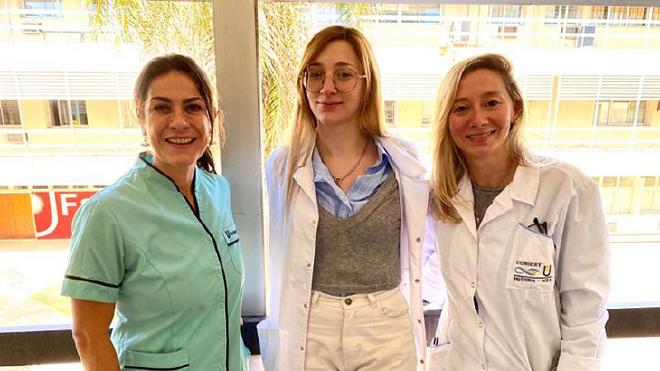
Considered as agricultural waste, the pods of three legume species grown in Northeastern Argentina are studied as sources of polyphenolic compounds with antioxidant activity.

The use of agricultural waste to obtain polyphenolic compounds (PPCs) is of scientific interest, as they are considered an abundant, biorenewable, and low-cost resource. Numerous PPCs derived from agricultural waste have demonstrated potential pharmacological properties that could be used as agents for the prevention and treatment of many human diseases.
The characteristics of polyphenolic compounds that make them attractive for study lie in their origin in the secondary metabolism of plants and microorganisms. These secondary metabolites are chemical compounds that plants produce naturally, and their primary function is to defend plants against pathogens (microorganisms) and even herbivores. These compounds have been shown to have beneficial effects on human health, primarily attributed to their antioxidant and anti-free radical properties, which can delay, hinder, or inhibit the oxidation of DNA, proteins, and lipids.
Her interest in understanding these compounds led Erica Danisa Spinnenhirn, a student in the FaCENA Chemical and Biochemical Sciences Teaching program, to apply for a Scientific Vocations Incentive Grant from the National Interuniversity Council. Titled “Comparative experimental and theoretical study on the relationship between the structure and antioxidant activity of polyphenolic compounds,” the research will be directed by Dr. Margarita M. Vallejos and co-directed by Dr. María Victoria Traffano Schiffo.
The Applied Chemistry Research Group (GIQAp) of the Institute of Basic and Applied Chemistry (IQUIBA-NEA) is investigating the potential of legume pods grown in Northeastern Argentina, considered agricultural waste, as possible sources of bioactive compounds.
“To date, we have found that extracts from the pods of Vigna unguiculata, Cajanus cajans, and Mucuna pruriens contain high concentrations of polyphenol compounds with significant antioxidant activity,” Dr. Vallejos told Argentina Investiga.
This project will deepen this line of research to generate knowledge that “will allow for a greater understanding of the structural factors of polyphenolic compounds detected in legume pods from Northeastern Argentina, which influence their antioxidant activity.”
To this end, the structure-antioxidant capacity relationship of the aforementioned polyphenolic compounds will be investigated using experimental techniques and computational tools.
Antioxidant capacity #
An antioxidant can be defined as any substance that, in low concentrations relative to oxidizable molecules, such as biomolecules, delays or prevents their oxidation.
Specifically, PFCs are metabolites synthesized (produced) by plants in their various parts (fruits, leaves, branches, roots, etc.) that are characterized by having at least one aromatic ring in their structure, to which one or more hydroxyl (OH) groups are attached. Numerous studies have supported the biological properties of PFCs, which are primarily a consequence of their antioxidant properties.
The presence of antioxidants in foods is essential, not only because they activate the natural organoleptic properties, preserving them, but also because when ingested, they broadly and effectively protect the health of those who consume them, preventing the development of serious diseases, as well as neurodegenerative processes.
“Synthetic antioxidants have been widely studied and used due to their low cost and high efficacy; however, recent research has reported that such antioxidants can be harmful to health. In contrast, natural antioxidants have low toxicity, and their study and use have attracted considerable attention in recent decades,” concluded Dr. Vallejos.
The article Analizan desechos agrícolas como posibles fuentes de compuestos bioactivos was written by Juan Monzón Gramajo Universidad Nacional del Nordeste. Departamento de Comunicación Institucional

